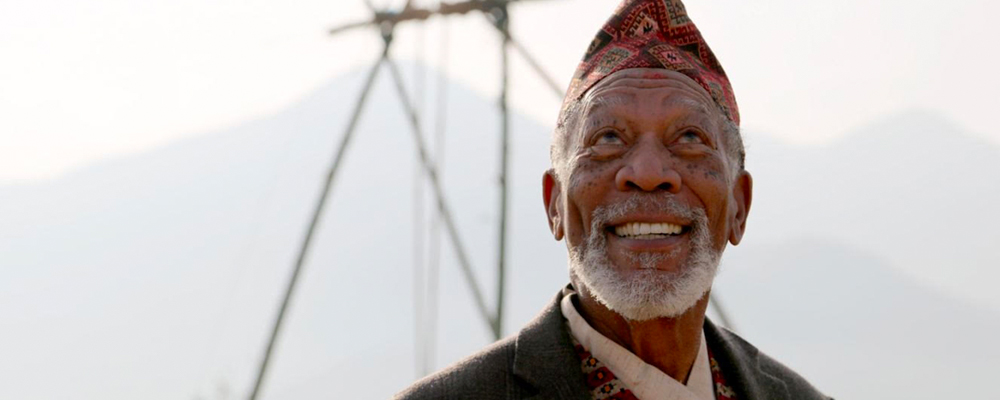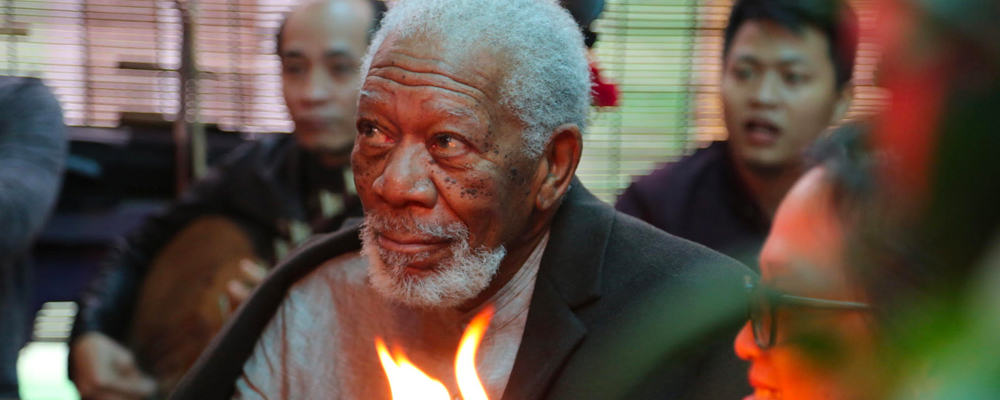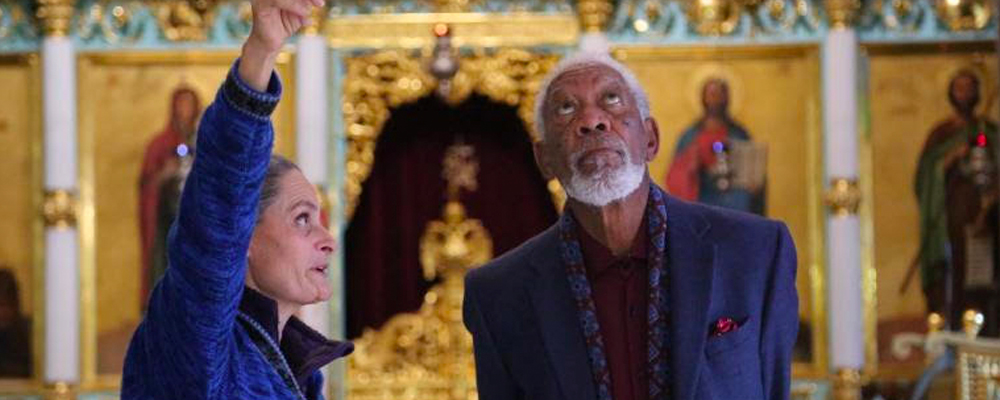‘The Story of God’ Season 3: Morgan Freeman Returns to Explore the Different Ways Cultures Worship
Alci Rengifo
Morgan Freeman continues his odyssey into the various beliefs in deities and spiritual realms around the world for a third season of “The Story of God.” This National Geographic show returns with its usual, anthropological charm. From Nepal to Rome, Freeman walks into monasteries, temples and ancient ruins to explore how cultures practice beliefs centered around something beyond this mere, physical existence. Overall it’s still quite educational and revelatory.
With his signature voiceover, Freeman kicks off the season with two episodes exploring the idea of the Devil and the idea of God. The season premiere finds the actor who played the Lord in “Bruce Almighty” trekking to the Judean desert to visit the monastery where Greek orthodox monks practice fierce self-discipline and fasting to ward off the Devil. In Nepal he hangs out with Buddhist monks who lead prayers to purge malevolent forces. In the Czech Republic an old manuscript is analyzed which legend has it, was written by a monk who gave his soul to the dark one in order to complete an impossible task. What would an episode about the Devil be without talk of exorcism? Freeman drops by Italy to interview a priest on how the ritual works, before interviewing an anonymous physicist who claims to have faced possession. The second episode explores the idea of gods on Earth, ranging from the Christian belief in Jesus as messiah to a medium in Hanoi who acts as a conduit for spirits bringing messages to the living. In Ethiopia a Rastafarian discusses the belief in former Ethiopian emperor Haile Selassie being a god who led the way for black liberation.
All of these places and themes are treated with an eye not towards polemics, but to inform the viewer with fascinating information. Freeman is like a mellow Anthony Bourdain, using religion to explore the fabric of a society the way Bourdain used local cuisines. In the season premiere, “Search for the Devil,” the idea of dark forces is used to go beyond a mere cartoonish version of evil. In a monastery in the Judean desert we see skulls of dead monks who resisted a Persian invasion, and the segment in the Czech Republic almost takes on a darkly comic tone as drawing of Satan from the Middle Age is analyzed. The dark one is drawn with such an over the top style, all fangs and loincloths, that a scholar concludes it’s a classic form of church propaganda from the medieval world, behave badly and you will be damned to meet the creature on the page. In Nepal a Buddhist priest tells Freeman fighting evil is really about controlling oneself. Like many other shows on Nat Geo, information is offered that sends us running to Google. When traveling through ancient ruins in Rome, we learn about the infamous Brazen Bull used to roast rebels of the state, in particular those pesky early Christians like Saint Antipas. The episode does skirt into eyebrow-raising territory when Freeman sits down with anonymous physicist who claims to have been possessed and asked for an exorcism. But this is a show about belief, so whether we believe the interview subject or not, it makes sense to hear him out.
The second episode of the season, “Gods Among Us,” proves to be even more engaging. Freeman walks around the Church of the Nativity in Bethlehem and then travels to a rare archaeological site in Israel which appears to be the old dining hall of an early Christian family. Even more fascinating, the evidence on the site points to women having been prominent in the early Christian groups (to the dismay of some current Baptists no doubt). The best moment takes place in Nepal, where Freeman finds in Kathmandu the equivalent of a living goddess, the Kumari Devi, a prepubescent girl believed to be the Hindu goddess Taleju. Freeman is astounded to learn that the Kumari cannot smile or make any expression at him, even a smile could mean something bad. But it all goes well and he receives a prompt blessing. Even more interesting, Freeman interviews a former Kumari who comes from a clan descended from Siddhartha, the Buddha. Now a teenager she has fulfilled her role and seems quiet and sweet, allowed now to smile as she recounts being the Kumari. Equally fascinating is a section in Hanoi, Vietnam, where a medium channels the spirits for visitors with important questions. At one point the medium channels a dead general, smoking a cigarette the way he apparently liked to when among the living.
A show like “The Story of God” is still relevant in this post-technology age which has convinced itself to be based on nothing more than rational thinking. As Freeman demonstrates here, belief is something quite powerful and profound. He can’t help but look a bit skeptical when inspecting certain artifacts, like the supposed crown of thorns worn of by Christ during his crucifixion, now kept in France, but he is always in awe of the general power of faith. It’s an enlightening hour of television that is part travelogue and also a trek through how we as humans are always seeking ways to believe.
“The Story of God” season three premieres March 5 and airs Tuesdays at 9 p.m. ET on National Geographic.



